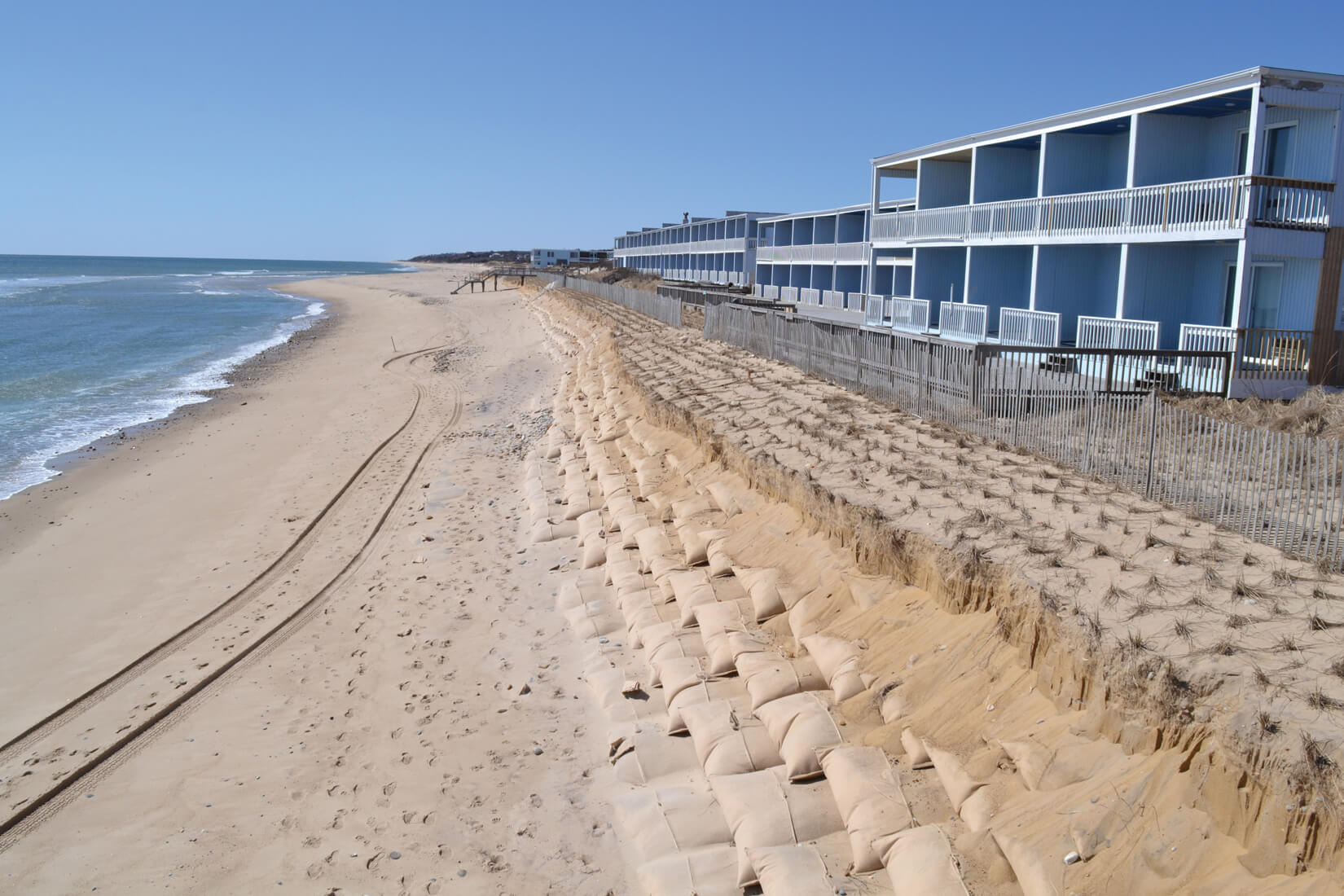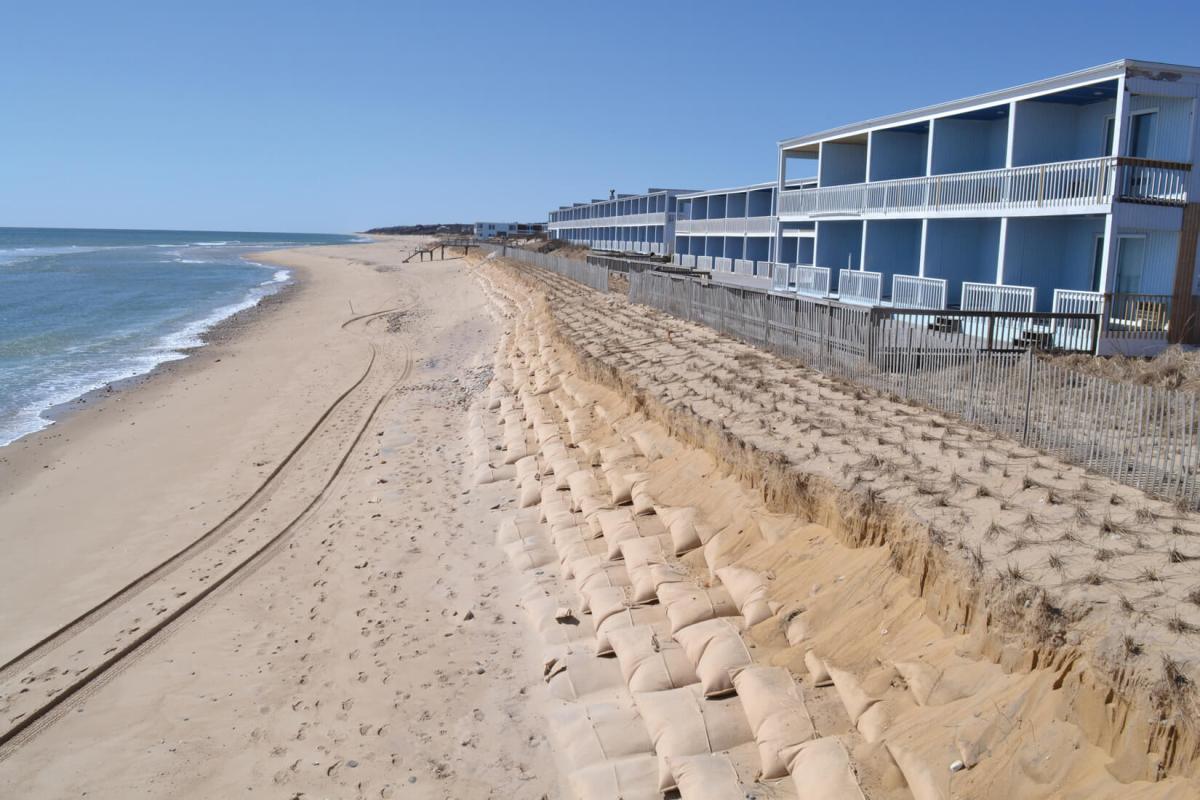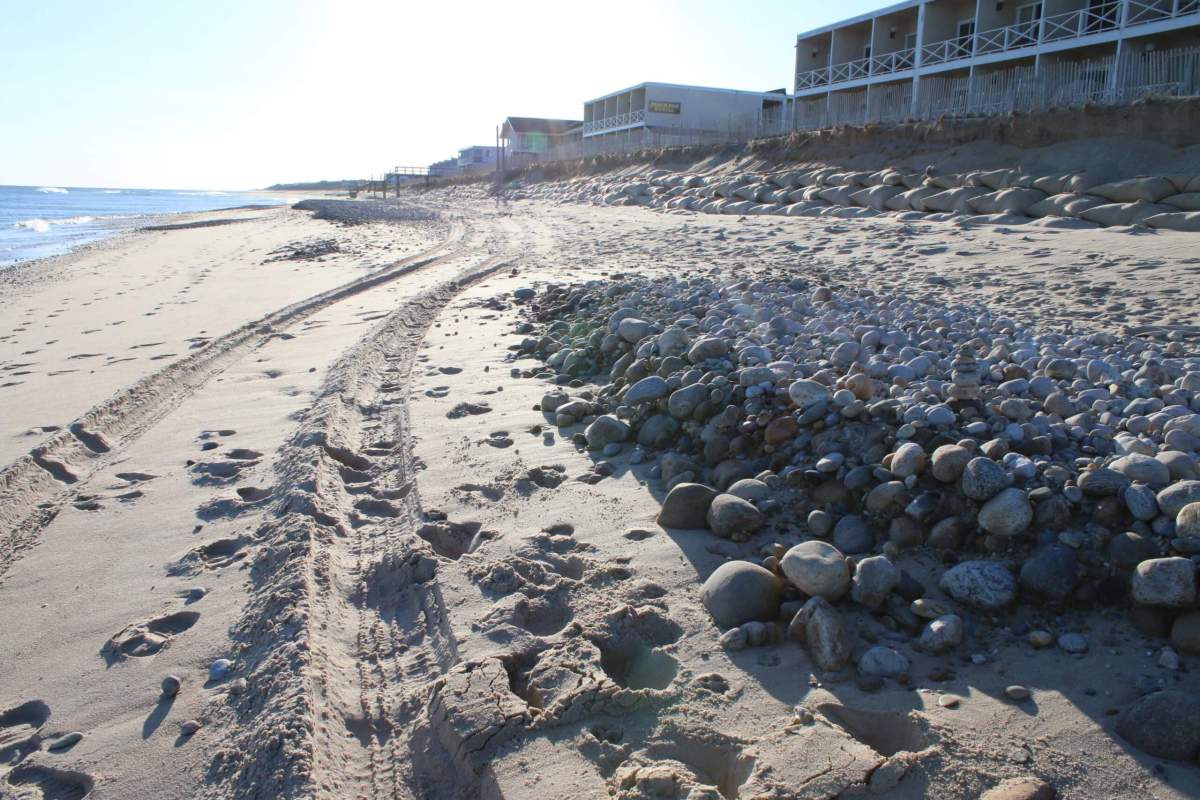Dune Plans Coming Next Summer?

Christmas is coming . . . and so is the signing of the final report for the US Army Corps of Engineers’ Fire Island to Montauk Point Reformulation Study. Christmas will likely be here several times before a permanent dune restoration project is undertaken in Montauk as a timeline remains unclear.
The Chief’s report, or final report, for the 60-plus-year-old study setting forth a plan to restore 83 miles of storm-battered coastline along Suffolk County’s barrier beach is expected to be completed in late 2018. From there it will be forwarded to Army headquarters for approval of the Assistant Secretary of the Army, which can happen sometime in 2019, according to Army Corps spokesman Jim D’Ambrosio.
Preconstruction engineering and design plans cannot be undertaken until after the Chief’s report is approved. Once the Chief’s report is signed, the plans, outlining the corps’ recommendations for the restoration of severely eroded beaches of Montauk, could be completed sometime in the summer of 2019, D’Ambrosio said.
East Hampton Town officials agreed to take over the maintenance of the beach fronting downtown Montauk as part of an emergency stabilization plan two years ago pending completion of the FIMP study. Under the plan, geobags filled with sand were placed along the dune line, and it was expected that the town would undertake sand replenishment to build up the location following bad storms.
Three nor’easters later, the geobags are now exposed and the town is expressing frustration with the amount of time it will take for the corps to begin construction along the coastline.
East Hampton Town Supervisor Peter Van Scoyoc said he was informed by Congressman Lee Zeldin’s office that the draft plan and specs for the project are expected by December 2019.
“I am somewhat frustrated with the amount of time it has taken to get FIMP through the process and implemented,” Van Scoyoc said, adding it is “pushing six years after Superstorm Sandy,” which caused the beach to become so vulnerable that the emergency stabilization project was needed.
“Assertions and expectations were created by [the US Army Corps] with regard to putting in the emergency stabilization project, that it would be immediately followed by FIMP and the town wouldn’t be in the position that it is in right now of maintaining the sand at that beach.”
In an email, Zeldin spokeswoman Katie Vincentz stated “The entire FIMP project is moving along as one project on the same timeline.”
“The Congressman has been in constant contact with the Army Corps, meeting with them just last Thursday, where he not only continued advocating to move full speed ahead, but specifically advocated strongly for the important priority of downtown Montauk, where the situation is a threat to property and public safety with significant maintenance costs in the meantime,” Vincentz stated.
Van Scoyoc said town officials have not yet determined how much sand is needed to cover the geobags or what the replenishment will cost under the post-storm assessment reflecting the damage of three nor’easters. Pre-storm it was in the range of $300,000, he said.
The town has about $1.5 million budgeted for such projects while the FIMP study is underway. Town officials could “make available whatever is necessary” to cover the cost if need be, Van Scoyoc said.
The town could also receive assistance through an inter-municipal agreement with Suffolk County, he said.
In its Operations and Maintenance Plan, the Army Corps projected the town would need about 27,154 cubic yards of sand, worth about $96,000, coming out to a total of $157,000 in annual maintenance costs for East Hampton.
“So my frustration level is pretty high,” Van Scoyoc said. “The amount of maintainance they said we should expect on a 10-year average was that it would be a quantity of sand greatly smaller than what we’re finding — even the Corps had to put on the beach, in order to restore it, before they actually turned it over. Now we are looking at an even greater quantity of sand to put back.”
D’Ambrosio explained the sand that was blown away by the storm could also be returned to the beach by the wind this time of year. He also noted that the projections made in the Operation and Management Plan supplied to the town were the best estimates of what the costs are at the time.
“We work with the local sponsors,” he said. “The main thing is that we want to protect everything behind the dunes.”
Montauk’s coastline has been vulnerable for over 50 years, but the combination of a high tide during Superstorm Sandy in 2012 shook up the dunes requiring the emergency stabilization project.
The Army Corps came to an agreement with the town and agreed to bury about 14,000 geotextile bags along about 3,100 feet of coast buffering downtown Montauk. The project cost $8.4 million.
“For a major off-shore beach restoration where we would bring in dredges and pump in sand, we are talking about somewhere around 650-700,000 cubic yards of sand, which makes the whole stabilization project moot,” the supervisor said, noting the town would no longer be responsible for the emergency stabilization project because it would be covered in sand. “Where is that project?
It is still years away. The representation of it being much sooner was weighed heavily upon our accepting the project in going forward.”
Community members unhappy with the idea of geo-bags creating a man made buffer, acquiesced when offered the promise of a more comprehensive sand renourishment program through the FIMP.
A town replenishment project to replace sand over the exposed bags will occur, but the work can’t be started too soon because the beach could be “pummeled” by another storm, Van Scoyoc noted.
“In terms of being ready for summer, we are on track for that,” he said.
Van Scoyoc was expected to update the public about the beach replenishment and FIMP study during a work session at the Montauk Firehouse as The Independent went to press.
peggy@indyeastend.com





